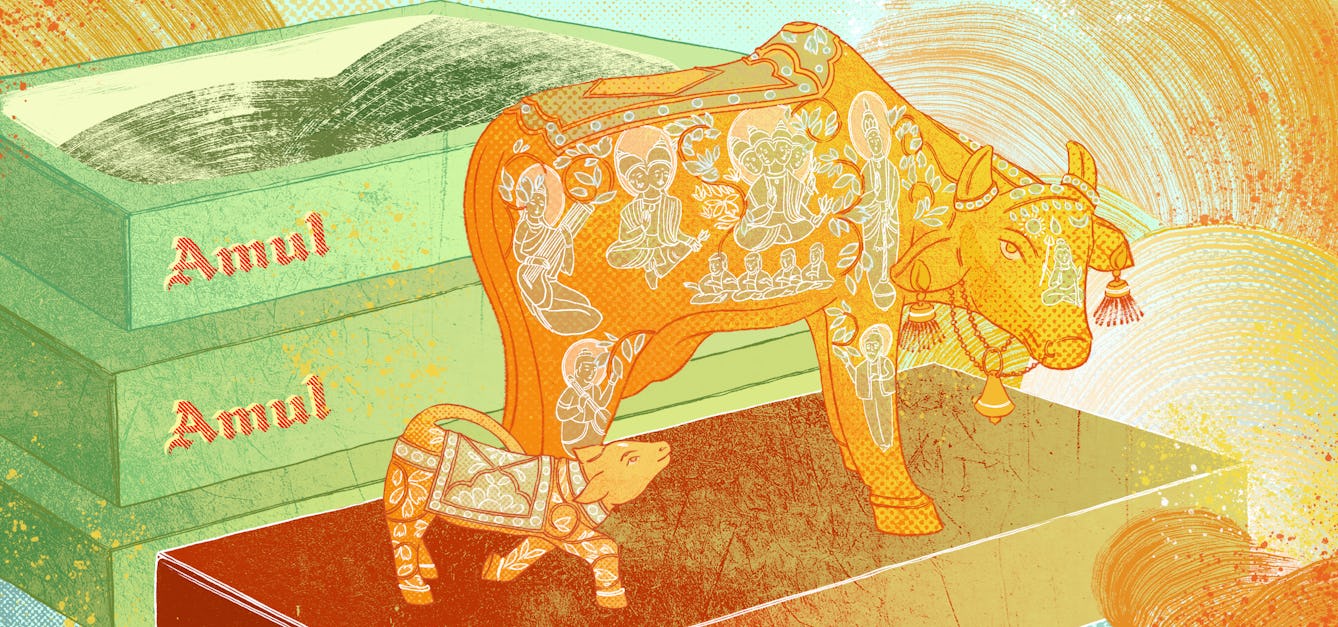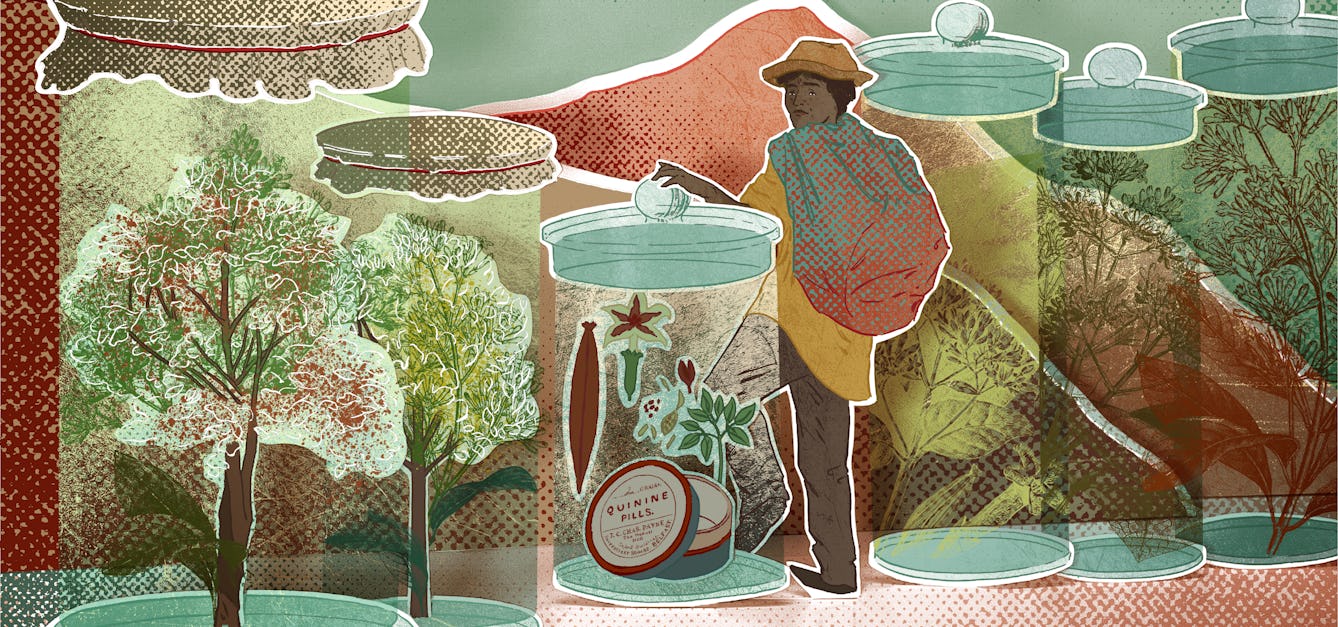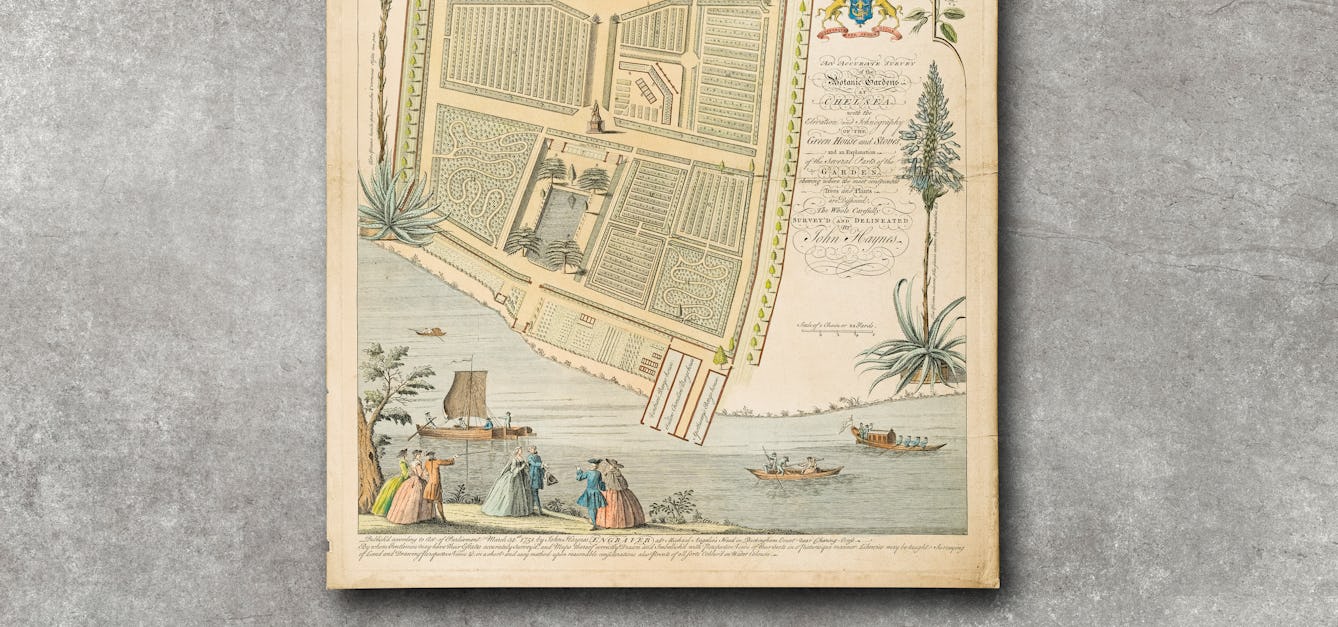Stories

- Article
Sacred cows and nutritional purity in India
Apoorva Sripathi explores the complex reasons behind India’s recent boom in all things dairy – beginning with a 1970s Western food-aid programme.

- Article
Hunting lost plants in botanical collections
A bark specimen at Kew recalls the story of a South American man who harvested the most potent source of the only effective malaria treatment available in the late 1800s. Killed for his work and forgotten by history, Manuel Mamani was a victim of the colonial juggernaut.

- Book extract
Ayurveda: Knowledge for long life
The story of medicine in India is rich and complex. Aarathi Prasad investigates how it came to be this way.

- Article
The healing power of the physic garden
Having experienced the healing power of plants and gardens, Iona Glen goes in search of present-day “physic gardens” and their origins in history.
Catalogue
- Archives and manuscripts
Unsigned paper arguing for lower duties on medicinal plants imported from the East to Great Britain
Date: Late 18th century - early 19th centuryReference: MS.7226/1Part of: Medicinal Plants: miscellany- Archives and manuscripts
- Online
Burroughs Wellcome & Co, Private Letter Book 9
Date: February 1902 - May 1902Reference: WF/E/03/09Part of: Wellcome Foundation Ltd- Archives and manuscripts
Burroughs Wellcome & Co, Private Letter Book 9
Date: February 1902 - May 1902Reference: WF/E/03/09 (copy, part 1)Part of: Wellcome Foundation Ltd- Archives and manuscripts
Burroughs Wellcome & Co, Private Letter Book 9
Date: February 1902 - May 1902Reference: WF/E/03/09 (copy, part 2)Part of: Wellcome Foundation Ltd- Archives and manuscripts
- Online
Burroughs Wellcome & Co, Private Letter Book 10
Date: May 1902 - October 1902Reference: WF/E/03/10Part of: Wellcome Foundation Ltd
![Salvia coahuilensis Fernald Lamiaceae Coahuila Sage. Perennial shrub. Distribution: Mexico. Most of the historical medicinal literature is on common sage, Salvia officinalis. The name Salvia meaning 'healthy'. Elizabeth Blackwell (1737) wrote that it had "... all the noble Properties of the other hot Plants more especially for the Head, Memory, Eyes, and all Paralytical Affections. In short, 'tis a Plant endu'd with so many and wonderful Properties, as that the assiduous use of it is said to render Men Immortal" with which Hans Sloane agreed. Its health giving properties were recorded in the aphorisms of the School of Salerno (fl 9-13th century) - quoted in the Decameron [c.1350, translated: Why should man die when Salvia grows in the Garden']. Some salvias, such as Salvia divinorum contain hallucinogenic compounds. Photographed in the Medicinal Garden of the Royal College of Physicians, London.](https://iiif.wellcomecollection.org/image/B0009179/full/282%2C/0/default.jpg)

![Salvia nemorosa L. Lamiaceae Woodland sage. Balkan clary Distribution: Central Europe, Western Asia. Most of the historical medicinal literature is on common sage, Salvia officinalis. The name Salvia meaning 'healthy'. Elizabeth Blackwell (1737) wrote that it had "... all the noble Properties of the other hot Plants more especially for the Head, Memory, Eyes, and all Paralytical Affections. In short, 'tis a Plant endu'd with so many and wonderful Properties, as that the assiduous use of it is said to render Men Immortal" with which Hans Sloane agreed. Linnaeus (1782) also: 'Timor, Languor, Leucorrhoea, Senectus [fear, tiredness, white vaginal discharge, old age]'. Its health giving and immortality conferring properties were recorded in the aphorisms of the School of Salerno (fl 9-13th century) - quoted in the Decameron [c.1350, translated: Why should man die when Salvia grows in the Garden']. Some salvias, such as Salvia divinorum contain hallucinogenic compounds. Photographed in the Medicinal Garden of the Royal College of Physicians, London.](https://iiif.wellcomecollection.org/image/B0009180/full/282%2C/0/default.jpg)



![Atropa belladonna L. Solanaceae. Deadly nightshade. Dwale. Morella, Solatrum, Hound's berries, Uva lupina, Cucubalus, Solanum lethale. Atropa derives from Atropos the oldest of the three Fates of Greek mythology who cut the thread of Life (her sisters Clotho and Lachesis spun and measured the thread, respectively). belladonna, literally, means 'beautiful lady' and was the Italian name for it. Folklore has it that Italian ladies put drops from the plant or the fruits in their eyes to make themselves doe-eyed, myopic and beautiful. However, this is not supported by the 16th and 17th century literature, where no mention is ever made of dilated pupils (or any of the effects of parasympathetic blockade). Tournefort (1719) says 'The Italians named this plant Belladonna, which in their language signifies a beautiful woman, because the ladies use it much in the composition of their Fucus [rouge or deceit or cosmetic] or face paint.' Parkinson says that the Italian ladies use the distilled juice as a fucus '... peradventure [perhaps] to take away their high colour and make them looke paler.' I think it more likely that they absorbed atropine through their skin and were slightly 'stoned' and disinhibited, which made them beautiful ladies in the eyes of Italian males. Distribution: Europe, North Africa, western Asia. Culpeper (1650) writes: 'Solanum. Nightshade: very cold and dry, binding … dangerous given inwardly … outwardly it helps the shingles, St Antonie's Fire [erysipelas] and other hot inflammation.' Most of the 16th, 17th and 18th century herbals recommend it topically for breast cancers. Poisonous plants were regarded as 'cold' plants as an excess of them caused death and the body became cold. They were regarded as opposing the hot humour which kept us warm and alive. Poultices of Belladonna leaves are still recommended for muscle strain in cyclists, by herbalists. Gerard (1633) writes that it: 'causeth sleep, troubleth the mind, bringeth madnesse if a few of the berries be inwardly taken, but if more be taken they also kill...'. He was also aware that the alkaloids could be absorbed through the skin for he notes that a poultice of the leaves applied to the forehead, induces sleep, and relieves headache. The whole plant contains the anticholinergic alkaloid atropine, which blocks the peripheral actions of acetylcholine in the parasympathetic nervous system. Atropine is a racemic mixture of d- and l- hyoscyamine. Atropine, dropped into the eyes, blocks the acetylcholine receptors of the pupil so it no longer constricts on exposure to bright light - so enabling an ophthalmologist to examine the retina with an ophthalmoscope. Atropine speeds up the heart rate, reduces salivation and sweating, reduces gut motility, inhibits the vertigo of sea sickness, and is used to block the acetylcholine receptors to prevent the effects of organophosphorous and other nerve gas poisons. It is still has important uses in medicine. Atropine poisoning takes three or for days to wear off, and the hallucinations experienced by its use are described as unpleasant. We have to be content with 'madness', 'frenzie' and 'idle and vain imaginations' in the early herbals to describe the hallucinations of atropine and related alkaloids as the word 'hallucination' in the sense of a perception for which there is no external stimulus, was not used in English until 1646 (Sir T. Browne, 1646). It is a restricted herbal medicine which can only be sold in premises which are registered pharmacies and by or under the supervision of a pharmacist (UK Medicines and Healthcare Products Regulatory Agency (MHRA)). Photographed in the Medicinal Garden of the Royal College of Physicians, London.](https://iiif.wellcomecollection.org/image/B0008945/full/282%2C/0/default.jpg)


